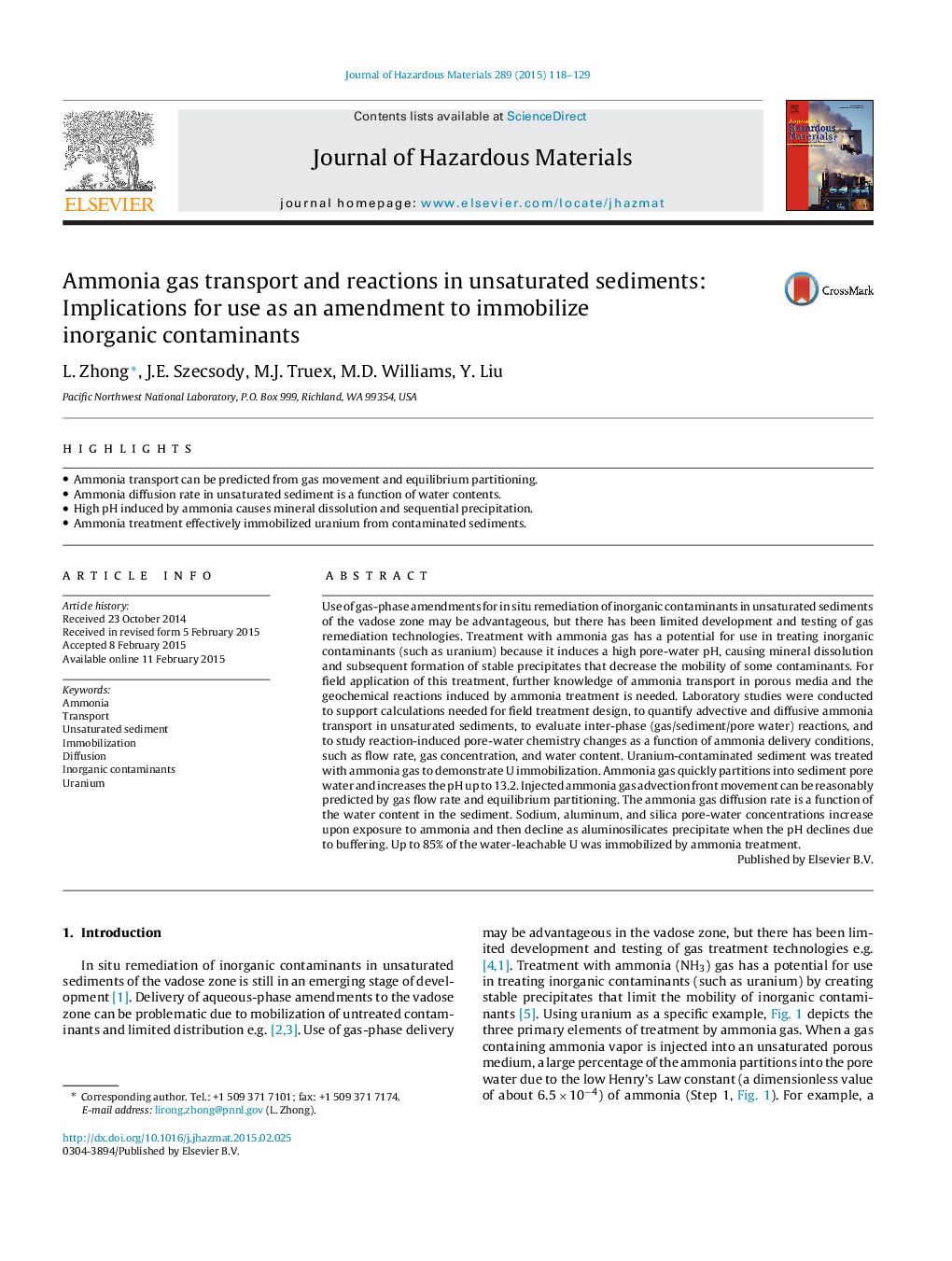| Article ID | Journal | Published Year | Pages | File Type |
|---|---|---|---|---|
| 576189 | Journal of Hazardous Materials | 2015 | 12 Pages |
Abstract
Use of gas-phase amendments for in situ remediation of inorganic contaminants in unsaturated sediments of the vadose zone may be advantageous, but there has been limited development and testing of gas remediation technologies. Treatment with ammonia gas has a potential for use in treating inorganic contaminants (such as uranium) because it induces a high pore-water pH, causing mineral dissolution and subsequent formation of stable precipitates that decrease the mobility of some contaminants. For field application of this treatment, further knowledge of ammonia transport in porous media and the geochemical reactions induced by ammonia treatment is needed. Laboratory studies were conducted to support calculations needed for field treatment design, to quantify advective and diffusive ammonia transport in unsaturated sediments, to evaluate inter-phase (gas/sediment/pore water) reactions, and to study reaction-induced pore-water chemistry changes as a function of ammonia delivery conditions, such as flow rate, gas concentration, and water content. Uranium-contaminated sediment was treated with ammonia gas to demonstrate U immobilization. Ammonia gas quickly partitions into sediment pore water and increases the pH up to 13.2. Injected ammonia gas advection front movement can be reasonably predicted by gas flow rate and equilibrium partitioning. The ammonia gas diffusion rate is a function of the water content in the sediment. Sodium, aluminum, and silica pore-water concentrations increase upon exposure to ammonia and then decline as aluminosilicates precipitate when the pH declines due to buffering. Up to 85% of the water-leachable U was immobilized by ammonia treatment.
Related Topics
Physical Sciences and Engineering
Chemical Engineering
Chemical Health and Safety
Authors
L. Zhong, J.E. Szecsody, M.J. Truex, M.D. Williams, Y. Liu,
